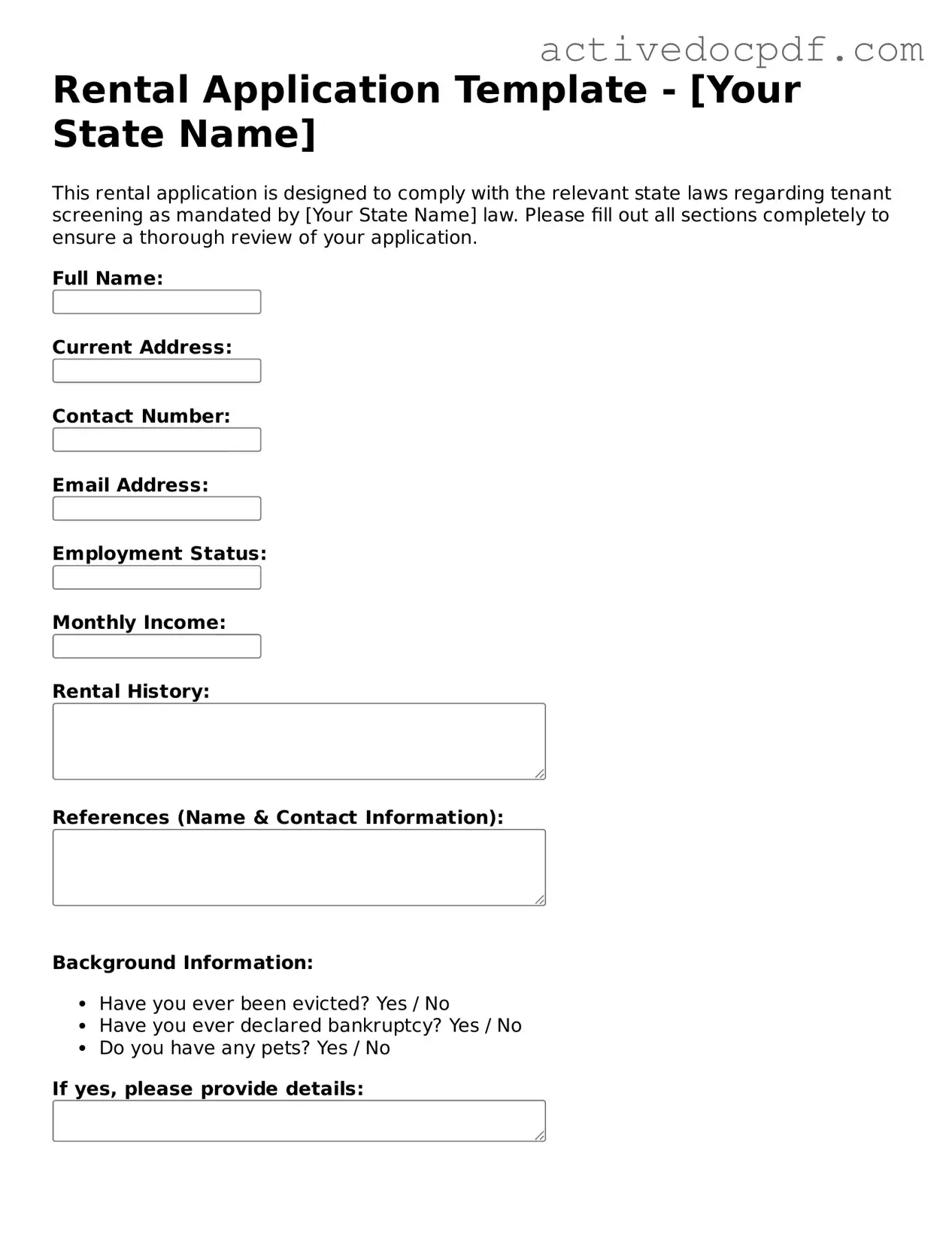A Rental Application form is a document that potential tenants fill out to apply for a rental property. This form helps landlords or property managers gather essential information about applicants, including their rental history, employment status, and personal references. By reviewing this information, landlords can make informed decisions about who to rent their property to.
When completing a Rental Application, you will typically need to provide the following information:
-
Personal Information:
Your full name, contact information, and Social Security number.
-
Rental History:
Details about your previous addresses, including landlord contact information and the duration of your stay.
-
Employment Information:
Your current employer's name, your position, and income details.
-
References:
Personal or professional references who can vouch for your character and reliability.
-
Financial Information:
Information about your credit history, bank accounts, and any other relevant financial details.
Why is my credit history important for the Rental Application?
Your credit history plays a crucial role in the rental application process. Landlords use it to assess your financial responsibility and reliability as a tenant. A good credit score can demonstrate that you pay your bills on time and manage your finances well. Conversely, a poor credit score may raise concerns for landlords about your ability to pay rent consistently. It's a good idea to check your credit report before applying to ensure there are no surprises.
How long does the rental application process take?
The rental application process can vary depending on several factors, such as the landlord's or property manager's policies, the number of applications they receive, and how quickly they can verify the information provided. Generally, it can take anywhere from a few days to a week. To speed up the process, ensure that you provide complete and accurate information and respond promptly to any requests for additional documentation.
What happens after I submit my Rental Application?
Once you submit your Rental Application, the landlord or property manager will review it. They may conduct background and credit checks, contact your references, and verify your employment and rental history. After completing this process, they will typically inform you of their decision. If approved, you will receive further instructions regarding the lease agreement and any required deposits. If denied, you may request information about the reasons for the denial.
